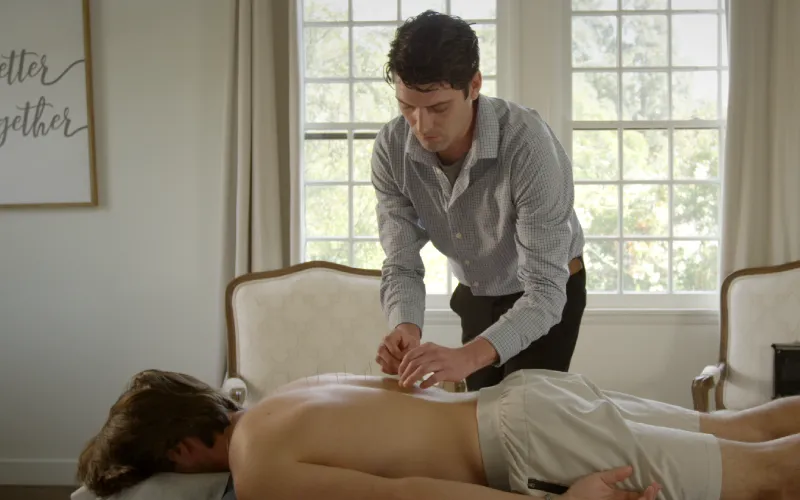
Table of Contents

Understanding how long to detox from alcohol is important for your safety and well-being. If you’re considering quitting alcohol, knowing the alcohol detox timeline might help you feel a bit more prepared and in control. Here’s what symptoms may appear, how long they might linger, and when you probably need medical help.
How Long Does It Take to Detox from Alcohol?
For many people, alcohol withdrawal symptoms may begin just 6 to 12 hours after their last drink.
Around the 2- to 3-day mark, symptoms may peak. This is when severe withdrawal symptoms, such as confusion, hallucinations, or even seizures, are more likely to occur, especially in those with heavy alcohol use or a history of alcohol dependence.
These might include shaking, headache, sweating, nausea, and anxiety. The worst symptoms, such as confusion or hallucinations, often happen around day 2 or 3.
By days 5 to 7, the intensity of symptoms usually starts to decrease, though some people with alcohol use disorder may continue feeling tired, irritable, or unwell for longer. The withdrawal timeline can vary, and symptoms of alcohol withdrawal may come and go in waves.
Factors That Influence the Alcohol Withdrawal Timeline
The timeline for alcohol withdrawal can vary widely from person to person. Several things affect how long alcohol detox takes for you, such as:
- Alcohol Habits: If you’ve been drinking large amounts of alcohol regularly, you’re more likely to experience withdrawal symptoms that are intense and prolonged.
- Health Conditions: Health conditions like liver disease, heart problems, or mental illness can make withdrawal harder.
- Age: Older adults who experience alcohol withdrawal syndrome often need more time to recover than younger people.
- Other Factors: Medications, your diet, and past withdrawals can also change how your body reacts.
If you’ve had severe withdrawal before, your symptoms may return faster and harder the next time. Each person’s body is different, so your detox experience may not exactly match someone else’s.

Stages and Symptoms of Alcohol Withdrawal
Alcohol withdrawal unfolds in clear stages. Symptoms typically begin a few hours after your last drink, peak within one to three days, and then gradually subside over several days.
Early Withdrawal Symptoms
You may notice symptoms starting as soon as 6 hours after you stop drinking. These early symptoms often include headache, sweating, anxiety, shaking, nausea, loss of appetite, and trouble sleeping.
For some individuals, mild confusion or restlessness may develop. It’s common to feel jittery and irritable during this stage.
If your alcohol use was heavy or long-term, your risks for more severe withdrawal symptoms grow. Here’s a quick checklist for early symptoms of withdrawal:
- Headache
- Irritability
- Insomnia
- Mild tremors
- Nausea
- Sweating
If you have past medical issues or a history of severe withdrawal, early symptoms might come on faster or feel more intense. Early symptoms are a key time to monitor yourself for signs of worsening withdrawal.
Peak Withdrawal Phase
Most people reach the worst point of withdrawal between 24 and 72 hours after their last drink. During this time, symptoms often worsen, and new, more serious problems can develop. Alcohol cravings are also at their worst during this time.
Here’s a list of symptoms that can appear in the peak phase:
- Hallucinations
- Severe tremors
- Confusion
- High blood pressure
- Fast heart rate
- Seizures
In some cases, people develop seizures or a dangerous condition called delirium tremens, which can be life-threatening and needs medical care right away. If you start to see things that aren’t there or become severely disoriented, seek help immediately.
Resolution of Symptoms
By days 5 to 7, many withdrawal symptoms usually begin to subside. Physical symptoms tend to improve, although you might still feel tired, moody, or have lingering alcohol cravings. For many people, however, physical symptoms become much less severe at this point.
Good nutrition, hydration, and support can help your recovery and regulate your central nervous system during this time. Daily activities may start to get easier as your withdrawal symptoms resolve.
If symptoms stretch beyond a week, it may be a sign your body needs more time. After detoxing from alcohol, this is the time to treat alcohol abuse. You could benefit from a treatment program for alcohol addiction.
Acute Withdrawal Vs Post-Acute Withdrawal
When you begin to detox from alcohol, the process usually happens in two distinct stages: acute withdrawal and post-acute withdrawal syndrome (PAWS).
Acute withdrawal is the first stage of alcohol detox. It starts quickly, usually within hours, and includes the most intense symptoms like sweating, shaking, confusion, and sometimes seizures. This stage generally peaks within a few days.
Once acute symptoms begin to fade, some people enter post-acute withdrawal syndrome, or PAWS. PAWS can last for weeks or even months. During this time, you might feel tired, have trouble sleeping, or notice mood swings. These feelings aren’t usually dangerous, but they can make staying sober a real challenge.
PAWS symptoms happen because your brain and body are adjusting to life without alcohol. While acute withdrawal needs medical attention, PAWS can be managed with support and healthy habits.
Therapy, community support, and alcohol addiction treatment programs can all help you cope with the lingering effects of alcohol withdrawal and maintain your progress in sobriety.
Detox And Treatment for Alcohol Withdrawal Symptoms
Detox can be dangerous if not managed correctly. Medical detox and supportive treatment options are important to protect yourself from life-threatening complications.
Supervised Detox Programs
A supervised detox program gives you medical care while you stop drinking. It’s also the first step of alcohol treatment. In these settings, doctors and nurses check your vital signs and watch for severe withdrawal symptoms like seizures or delirium tremors.
Detox programs reduce your risk of serious complications and make the withdrawal process more manageable. When you go through detox, you receive 24/7 medical care in a hospital or rehab center. It offers access to addiction treatment counselors, support groups, and emotional care to help begin recovery with a strong foundation.

Medications During Detox
Doctors may use different medicines to help control withdrawal symptoms. Benzodiazepines are the most common, helping to lower anxiety, prevent seizures, and reduce shakes or agitation.
These medicines are given as tablets or through an IV. Additional medications, such as those for nausea, insomnia, or elevated blood pressure, may also be prescribed to manage specific issues that arise.
For patients with other health issues, doctors may adjust doses or use additional medications to prevent complications. Medications allow you to go through detox with less discomfort and lower risk. These medications are typically administered in a supervised setting, where doctors can monitor for side effects and tailor care in real-time.
Managing Complications
Some people may experience severe withdrawal symptoms that require immediate medical intervention. Complications like seizures, severe confusion, dehydration, and heart problems can happen within the first few days.
In a medical detox setting, staff are trained to act quickly. Nurses may check your blood pressure, heart rate, and mental status several times a day. If you develop severe symptoms, you may receive additional fluids, nutrition, and even a stay in the intensive care unit (ICU) if needed.
Find Trusted Alcohol Detox Centers Nearby
It can be scary to start detox, but there’s no reason to do it alone. With trusted detox centers nearby, you can access professional care in a safe and supportive environment.
Various facilities offer medically supervised detox, 24/7 monitoring, and compassionate staff who understand what you are going through. Explore alcohol detox centers near you and take the first step toward sobriety.
Frequently Asked Questions
What is the typical duration of alcohol withdrawal symptoms?
Alcohol withdrawal symptoms usually begin within 6 to 24 hours after your last drink. Most symptoms peak between day 1 and day 3. For many people, symptoms improve or resolve after 5 to 7 days. In some cases, mild symptoms like trouble sleeping or anxiety can last for several weeks.
What are the common symptoms to expect during the first week of alcohol abstinence?
During the first week, you may experience symptoms such as shaking, sweating, trouble sleeping, nausea, anxiety, irritability, and headaches. Some people experience more serious issues like hallucinations or seizures, especially if they drank large amounts for a long time. Symptoms typically worsen within the first three days and begin to improve after about a week.
How does the body change after you stop drinking alcohol?
Once you stop drinking, your body starts healing right away. Your liver begins to repair, and your heart and blood pressure can improve. You may also notice clearer thinking, better sleep, and more stable moods. These changes occur at varying rates for each individual. Some health benefits start within days, while others can take weeks or months.
Is it possible to experience withdrawal symptoms after a short period of heavy drinking?
Yes, even short periods of heavy drinking can lead to withdrawal symptoms. These may not last as long or be as severe as withdrawal after long-term drinking, but shakiness, irritability, and nausea can still happen for a few days.
What are long-term recovery expectations for someone abstaining from alcohol?
Long-term recovery often brings about significant changes, both mentally and physically. You may notice a lower risk of heart disease, and your liver may start functioning better. Some people find that their memory sharpens as well. There’s often a boost in energy, and relationships can feel a bit stronger or more genuine.








































